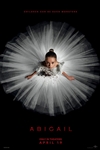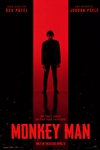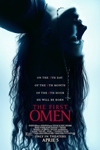Time Code (R) No Rating
 Self-canonizing auteur Mike Figgis' latest offering is a grand experiment in narrative filmmaking composed of arrogant intellectualism and haphazard plotlines.
Self-canonizing auteur Mike Figgis' latest offering is a grand experiment in narrative filmmaking composed of arrogant intellectualism and haphazard plotlines.
Story
Shot on digital video and in only one take, "Time Code" consists of four interlocking stories simultaneously projected onto each corner of the screen. And as for the story, let's just call it "The Film Producer, His Wife, the Aspiring Actress and Her Jealous Lesbian Lover." In all fairness, however, this film is not really about a story but rather the process of telling a story. Still, sustaining interest for 1 hour and 33 minutes in a story that is not only purposeless but also slow is a challenge. To boot, the simultaneous projection that was, among other things, meant to empower viewers with narrative choices backfires into a frustrating and confusing viewing experience.
Acting
The acting is largely impromptu, each actor having only a loose plot structure to work with. But the virtual absence of direction and the constant improvisation only render the acting more poignant. All things considered, the film does have the virtue of a consistently fine cast. Besides key performances by Stellan Skarsgard, Salma Hayek, Saffron Burrows and Jeanne Tripplehorn, on-the-mark turns come from sideliners such as Holly Hunter, Julian Sands and Kyle MacLachlan.
Direction
We understand what Figgis is trying to do: revolutionize filmmaking and film watching. Unfortunately the synchronicity, the improvisation, the self-effacement of the director, the experiment in perspectives and sound, the real-time no-edits thing, etc., just don't work. We're not faulting Figgis for being self-indulgent, just boring.
Bottom Line
This movie is more work than pleasure. Skip it unless you're a film theory major at NYU.
To get the full Quicklook Films experience, uncheck "Enable on this Site" from Adblock Plus
box office top 10

Civil War Released: April 12, 2024 Cast: Kirsten Dunst, Wagner Moura 11.1M

Abigail Released: April 19, 2024 Cast: Melissa Barrera, Dan Stevens 10.2M

Godzilla x Kong: The New Empire Released: March 29, 2024 Cast: Rebecca Hall, Brian Tyree Henry 9.5M

The Ministry of Ungentlemanly Warfare Released: April 19, 2024 Cast: Henry Cavill, Eiza Gonzalez 9M

Spy x Family Code: White Released: April 19, 2024 Cast: Takuya Eguchi, Saori Hayami 4.9M

Kung Fu Panda 4 Released: March 8, 2024 Cast: Jack Black, Viola Davis 4.6M

Ghostbusters: Frozen Empire Released: March 22, 2024 Cast: Paul Rudd, Carrie Coon 4.4M

Dune: Part Two Released: March 1, 2024 Cast: Timothée Chalamet, Rebecca Ferguson 2.9M

Monkey Man Released: April 5, 2024 Cast: Dev Patel, Sikandar Kher 2.2M

The First Omen Released: April 5, 2024 Cast: Nell Tiger Free, Bill Nighy 1.7M






